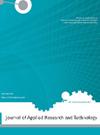A New direct power control method of the DFIG-DRWT system using neural PI controllers and four-level neural modified SVM technique
Q3 Engineering
Journal of Applied Research and Technology
Pub Date : 2023-02-23
DOI:10.22201/icat.24486736e.2023.21.1.2171
引用次数: 4
Abstract
Recently, direct power control (DPC) based proportional-integral (PI) controllers have become dominant for doubly fed induction generators (DFIGs) due to its simplicity and good dynamic response. But this strategy gives a high total harmonic distortion (THD) of the voltage and a large power ripple. In this paper, a new DPC method (called as NDPC-4L-NSVPWM) is proposed based on a four-level neural space vector pulse width modulation (4L-NSVPWM) and neural PI controllers for direct active and reactive powers command (DRAPC) of a DFIG integrated in a dual-rotor wind turbine (DRWT). This control scheme is based on direct reactive and active powers estimation. Theoretical principles of this strategy are presented along with simulation results. The advantages and robustness of NDPC-4L-NSVPWM control over other DPC with PI controllers (DPC-PI) are presented. The main advantages of NDPC-4L-NSVPWM strategy are relative to its good dynamic response, simplicity of the algorithm and operation at a constant switching frequency. Analysis of NDPC-4L-NSVPWM strategy based DFIG-DRWT has been done in MATLAB/Simulink software. Simulation results validate the performance of the NDPC-4L-NSVPWM strategy by evaluating the THD of current and the reduction of the ripples for the active/reactive power of DFIG-DRWTs.采用神经PI控制器和四阶神经修正支持向量机技术对DFIG-DRWT系统进行直接功率控制
近年来,基于直接功率控制(DPC)的比例积分(PI)控制器由于其简单性和良好的动态响应而成为双馈感应发电机的主流。但这种策略会产生较高的电压总谐波失真(THD)和较大的功率纹波。本文提出了一种新的DPC方法(称为NDPC-4L-NSVPWM),该方法基于四级神经空间矢量脉宽调制(4L-NSVWM)和用于双转子风力涡轮机(DRWT)中集成的DFIG的直接有功和无功功率命令(DRAPC)的神经PI控制器。该控制方案基于直接无功和有功功率估计。给出了该策略的理论原理和仿真结果。介绍了NDPC-4L-NSVPWM控制相对于其他带PI控制器的DPC-PI控制的优点和鲁棒性。NDPC-4L-NSVPWM策略的主要优点是其良好的动态响应、算法简单以及在恒定开关频率下的操作。在MATLAB/Simulink软件中对基于DFIG-DRWT的NDPC-4L-NSVPWM策略进行了分析。仿真结果通过评估电流的THD和DFIG DRWT有功/无功功率纹波的减少来验证NDPC-4L-NSVPWM策略的性能。
本文章由计算机程序翻译,如有差异,请以英文原文为准。
求助全文
约1分钟内获得全文
求助全文
来源期刊

Journal of Applied Research and Technology
工程技术-工程:电子与电气
CiteScore
1.50
自引率
0.00%
发文量
0
审稿时长
6-12 weeks
期刊介绍:
The Journal of Applied Research and Technology (JART) is a bimonthly open access journal that publishes papers on innovative applications, development of new technologies and efficient solutions in engineering, computing and scientific research. JART publishes manuscripts describing original research, with significant results based on experimental, theoretical and numerical work.
The journal does not charge for submission, processing, publication of manuscripts or for color reproduction of photographs.
JART classifies research into the following main fields:
-Material Science:
Biomaterials, carbon, ceramics, composite, metals, polymers, thin films, functional materials and semiconductors.
-Computer Science:
Computer graphics and visualization, programming, human-computer interaction, neural networks, image processing and software engineering.
-Industrial Engineering:
Operations research, systems engineering, management science, complex systems and cybernetics applications and information technologies
-Electronic Engineering:
Solid-state physics, radio engineering, telecommunications, control systems, signal processing, power electronics, electronic devices and circuits and automation.
-Instrumentation engineering and science:
Measurement devices (pressure, temperature, flow, voltage, frequency etc.), precision engineering, medical devices, instrumentation for education (devices and software), sensor technology, mechatronics and robotics.
 求助内容:
求助内容: 应助结果提醒方式:
应助结果提醒方式:


